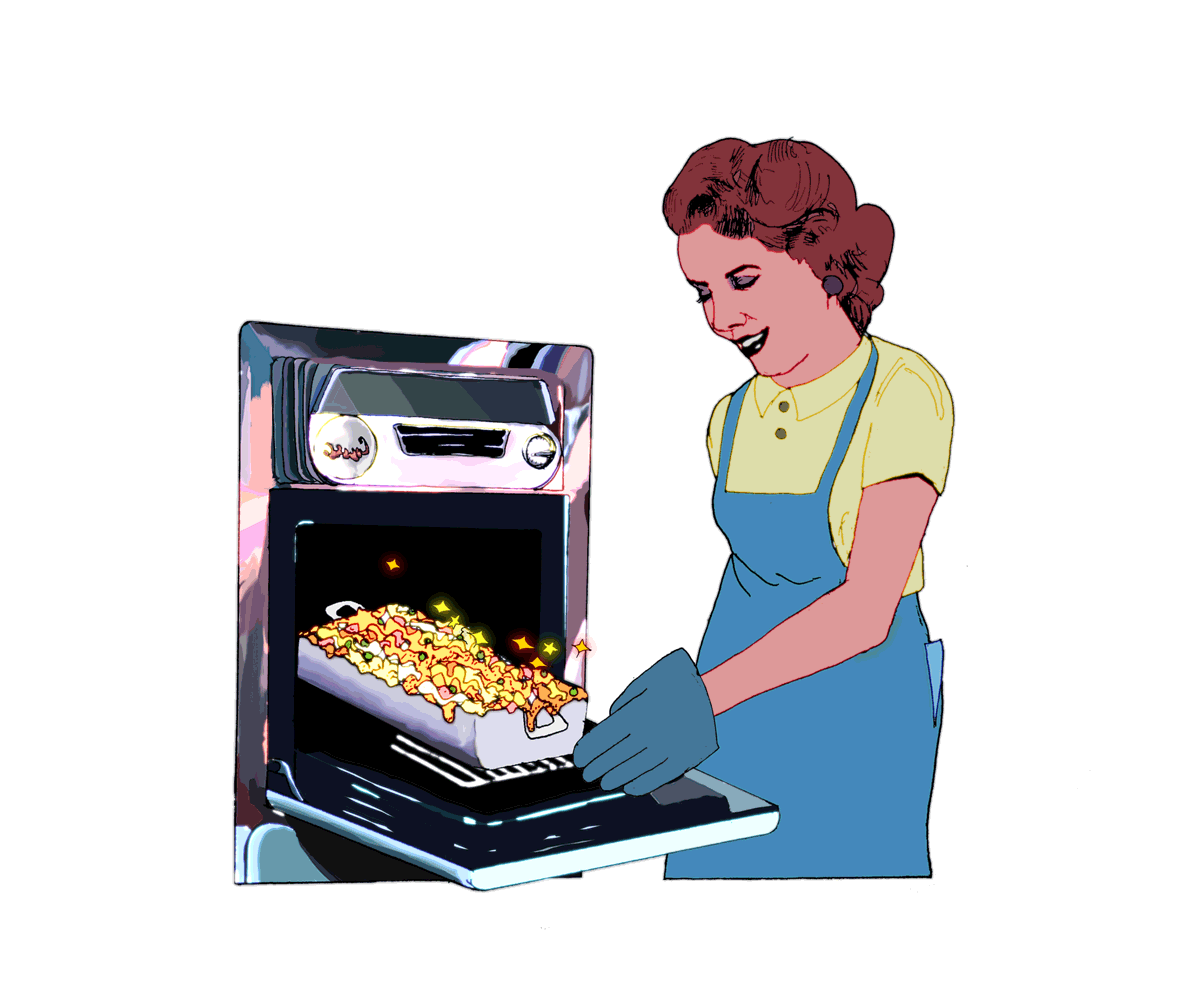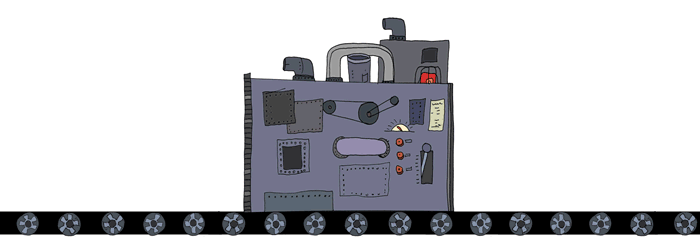
Although most associated with 1950s Middle America, this iconic bootstrap recipe first popped up in the Pacific Northwest in 1930.
There are no lukewarm feelings when it comes to tuna casserole. People are hot or cold on the stuff. Cookbook author Helen Evans Brown fell decidedly in the latter category. She intentionally, defiantly, left it out of her seminal West Coast Cook Book (1952), writing that “[i]f, for instance, a dish composed of tuna fish, canned mushroom soup, and corn flakes is in any danger of becoming a dish of the region, I prefer to ignore it. If by doing so I can give it ever so gentle a nudge toward oblivion, that is good.”
Helen Evans Brown’s good friend James Beard—probably somewhat reluctantly—included a modified recipe for it in his 1955 casserole cookbook. That same year, he lamented in a letter to Brown that “only tuna fish and potato chips and Campbell’s soup seem to sell, if you can believe the recipes.”
Although it’s mainly associated with Middle America, and the 1950s housewife, the earliest printed recipes for tuna casserole appeared two decades earlier in the Pacific Northwest. The first one, “Noodles and Tuna Fish en Casserole,” came from Sunset Magazine, from a “Mrs. W. F. S.” residing in Kennewick, Washington, in 1930. The same year, a “tuna fish and noodles casserole” appears on a menu suggested by the 100% real The Modern Hospital magazine, which probably sounds pretty appropriate to the dish’s haters. (Published by the American Hospital Association from 1913 to 1974, the journal offered the latest guidance in nursing, occupational and physical therapies, hospital administration, and, evidently, nutritious and well-balanced casseroles.)
Two years later a version appeared in Cook Book of Many Lands—a cookbook that the Americanization Department of Portland, Oregon’s Parent-Teacher Association established to help Portland women relate to their immigrant neighbors. Although there is nothing specifically German about the “German Noodles and Tuna Fish” recipe, it does bear a striking resemblance to the Sunset recipe. It’s made from the same Holy Trinity of noodles, tuna, and white sauce, with a pretty pimento garnish. Had James Beard known of its Pacific Northwest roots (he was a native Oregonian), he may have been warmer on the stuff.

Mrs. W. F. S.’s groundbreaking recipe included the mushrooms and the cheese topping familiar today; in fact, the addition of mushrooms probably had something to do with the widespread switch to canned cream of mushroom soup in lieu of laborious white sauce. The introduction of Campbell’s cream of mushroom soup in 1934 was the game-changer that cemented tuna casserole’s place in the American housewife’s culinary arsenal. Aside from the canned tuna, it was this ingredient’s ubiquity during World War II (a nadir of American ingredient availability and culinary ingenuity) that inspired the inimitable M. F. K. Fisher to include a noodle-less version of tuna casserole in How to Cook a Wolf (1942), offering the caveat that “condensed mushroom soup, while far from perfection, is a very present help in time of culinary trouble.”
After the war, tuna casserole remained in the housewife’s rotation, but the dish shed its Pacific Northwest roots and became associated with funerals (it’s a thing, swear!), and the Midwest. This all makes sense. It contains all of the components of the canonical hotdish (what Midwesterners call casseroles): protein, a vegetable of some kind, a starchy substrate, and a creamy binder. That bastion of lay cooking, allrecipes.com, features over 2,500 recipes for tuna casserole.
For these reasons, too, it was a permanent fixture in mid-century home-ec curricula: economical and time-saving, with no real cooking skill required besides the ability to wield a can opener. The “no skill required” might be why it is so maligned, but if done with even the smallest amount of care or intent (which really isn’t difficult, let’s be honest), it has all of the elements of any legitimate comfort food: bouncy noodles; firm flakes of briny tuna and sweet, crunchy peas; a creamy, savory sauce deftly binding it all together; and a lacy melted-cheese matrix suspending the bits of crispity topping. Miraculously, the cheesy topping avoids the wrongness of merely existing in the same place as canned fish: it just makes the topping more fatty and crispy. Sublimity.
My own mother—who cooked professionally and loathed doing it at home—relied fairly heavily on tuna casserole to keep her family fed. I grew up on the version one creates when the larder is filled solely by food stamp spoils and food bank donations, but I always loved it as a kid. Since I have more time, enjoy cooking, and can afford slightly better ingredients, I’ve been making a nicer version of it for nearly my entire adult life.